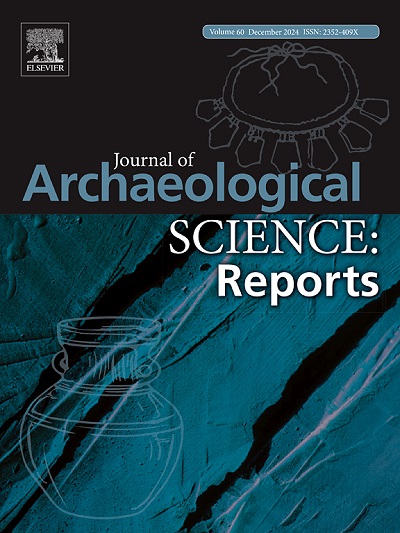Pit without finds = worthless pit? Investigating a Roman military camp from Caesar’s Gallic Wars (58 – 51 BC) near Hermeskeil (Germany)
IF 1.5
2区 历史学
0 ARCHAEOLOGY
引用次数: 0
Abstract
The Roman military camp at Hermeskeil (Germany) is the only securely dated temporary camp from the time of the Gallic Wars (58 – 51 BC). Two distinct phases of use have been identified, each lasting between two and six weeks. Despite the short period of use, the up to 15,000 soldiers who occupied the camp left behind some waste, which would most likely have been deposited in pits. So far, however, only one pit has been discovered. The excavated pit was almost devoid of identifiable archaeological materials. Given the shape and stratigraphy, with alternating dark organic layers and overlying soil material, we hypothesised that the pit was used as a latrine. Using multi-element analysis, we were able to distinguish between the geological background and the anthropogenic pit fill. High concentrations of organic carbon, phosphorus and nitrogen, as well as zinc, calcium and lead, show that the pit was used for waste disposal. Following Δ5-sterol, stanol and bile acid analyses, we found signatures related to the presence of herbivore (horse, ruminant) and omnivore (pig, human) faeces. The exclusive use of the pit as a latrine could be ruled out, as human faecal indicators were only found in one pit layer. We also found evidence of coinjection of faeces and undigested animal and plant tissues. The plant material recovered may have been used to cover the faeces. The presence of animal tissues was indicative of the disposal of slaughterhouse waste (stuffed intestines) generated during food preparation. Our study points the way for future investigations, as archaeological information can be found even in pits without macroscopic finds.

没有发现的坑=毫无价值的坑?调查凯撒高卢战争时期(公元前58 - 51年)在德国Hermeskeil附近的一个罗马军营。
位于Hermeskeil(德国)的罗马军营是高卢战争时期(公元前58 - 51年)唯一可以确定日期的临时营地。已经确定了两个不同的使用阶段,每个阶段持续两到六周。尽管使用时间很短,但占领营地的多达1.5万名士兵留下了一些废物,这些废物很可能被堆放在坑里。然而,到目前为止,只发现了一个坑。挖掘出来的坑里几乎没有可辨认的考古材料。考虑到坑的形状和地层,以及交替的深色有机层和上覆的土壤物质,我们假设坑被用作厕所。通过多元素分析,我们能够区分地质背景和人为填坑。高浓度的有机碳、磷和氮,以及锌、钙和铅,表明这个坑是用来处理废物的。通过Δ5-sterol、甾醇和胆汁酸分析,我们发现了与草食动物(马、反刍动物)和杂食动物(猪、人)粪便相关的特征。由于仅在一个坑层中发现了人类粪便指标,因此可以排除将坑用作厕所的可能性。我们还发现了粪便和未消化的动植物组织共同注射的证据。回收的植物材料可能被用来掩盖粪便。动物组织的存在表明处理了食品制备过程中产生的屠宰场废物(填塞的肠道)。我们的研究为未来的调查指明了方向,因为即使在没有宏观发现的坑中也可以找到考古信息。
本文章由计算机程序翻译,如有差异,请以英文原文为准。
求助全文
约1分钟内获得全文
求助全文
来源期刊

Journal of Archaeological Science-Reports
ARCHAEOLOGY-
CiteScore
3.10
自引率
12.50%
发文量
405
期刊介绍:
Journal of Archaeological Science: Reports is aimed at archaeologists and scientists engaged with the application of scientific techniques and methodologies to all areas of archaeology. The journal focuses on the results of the application of scientific methods to archaeological problems and debates. It will provide a forum for reviews and scientific debate of issues in scientific archaeology and their impact in the wider subject. Journal of Archaeological Science: Reports will publish papers of excellent archaeological science, with regional or wider interest. This will include case studies, reviews and short papers where an established scientific technique sheds light on archaeological questions and debates.
 求助内容:
求助内容: 应助结果提醒方式:
应助结果提醒方式:


